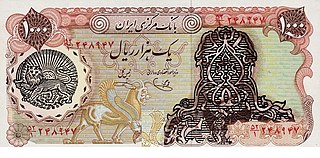
An overprint is an additional layer of text or graphics added to the face of a postage or revenue stamp, postal stationery, banknote or ticket after it has been printed. Post offices most often use overprints for internal administrative purposes such as accounting but they are also employed in public mail. Well-recognized varieties include commemorative overprints which are produced for their public appeal and command significant interest in the field of philately.
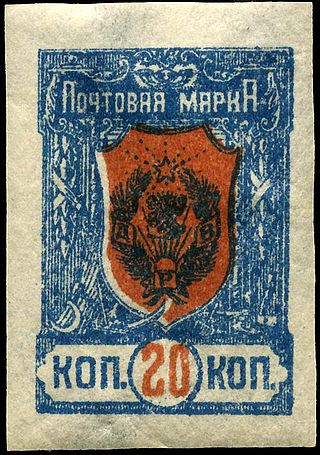
The Far Eastern Republic, sometimes called the Chita Republic, existed from April 1920 to November 1922 in the easternmost part of Siberia. It was formed from the Amur, Transbaikal, Kamchatka, Sakhalin, and Primorye regions. In theory, it extended from Lake Baikal to Vladivostok but, in May 1921, the Priamur and Maritime Provinces seceded. Although nominally independent, it was largely controlled by the RSFSR and its main purpose was to be a democratic buffer state between the RSFSR and the territories occupied by Japan during the Russian Civil War to avoid war with Japan. Initially, its capital was Verkhneudinsk, but from October 1920 it was Chita. On 15 November 1922, after the war ended and the Japanese withdrew from Vladivostok, the Far Eastern Republic was annexed by Soviet Russia.
Each "article" in this category is a collection of entries about several stamp issuers, presented in alphabetical order. The entries themselves are formulated on the micro model and so provide summary information about all known issuers.

Karelia has appeared in philately several times; first as a breakaway republic from Soviet Russia in 1922, later when Eastern Karelia was occupied by Finland during the Continuation War of 1941 to 1944, and in the post-Soviet period when provisional stamps and cinderellas were issued. Additionally, there were Zemstvo stamps used in the early 20th century on the territory of the contemporary Republic of Karelia.
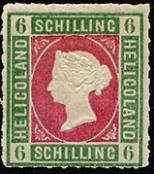
During the period when Heligoland was a British possession, about 20 postage stamps were issued between 1867 and 1890. There were up to eight printings of a single denomination and also a large volume of reprints which are known as the Berlin, Leipzig and Hamburg Reprints, respectively. The Berlin reprints are sometimes better quality than the originals. The reprints were done between 1875 and 1895. Consequently, many "old" collections contain reprints rather than originals. Some believe there were seven million reprints as compared to the known 1½ million originals, of which perhaps half were sold through the post office and the remainder sold to dealers when withdrawn from use. A few printings were never postally sold but nevertheless found their way into the hands of dealers. The stamps were printed by the Prussian State Printing Office in Berlin. They were denominated in the Hamburg Schilling until 1875, when both German Reich and British values appeared on each stamp issue. All are embossed with a silhouette of Queen Victoria excepting the four highest values which represent Heligoland escutcheons.

In general, philatelic fakes and forgeries are labels that look like postage stamps but have been produced to deceive or defraud. Learning to identify these can be a challenging branch of philately.
Russian stamps have been extensively forged. Both rare and common stamps have been forged and certain stamps, for instance those of the Army of the North, are more common forged than genuine.

The postage stamps and postal history of Armenia describes the history of postage stamps and postal systems in Armenia. Czarist Russian postmarks and stamps were in used in the territory of Armenia from 1858. The early postmarks were composed of dots in different shapes. Dated postmarks with city names soon followed. Many counterfeit postmarks are known. From 1909 until 1918 a few Russian stamps were overprinted identifying the Armenian Post. The Armenian letters H & P are intertwined, representing the initials of hai post, the Armenian Post Office.

This is a survey of the postage stamps and postal history of Lithuania.

The postal history of Turkey and its predecessor state, the Ottoman Empire, dates to the 18th century when foreign countries maintained courier services through their consular offices in the Empire. Although delayed in the development of its own postal service, in 1863 the Ottoman Empire became the second independent country in Asia to issue adhesive postage stamps, and in 1875, it became a founding member of the General Postal Union, soon to become the Universal Postal Union. The Ottoman Empire became the Republic of Turkey in 1923, and in the following years, its postal service became more modernized and efficient and its postage stamps expertly designed and manufactured.

The postage stamps and postal history of Azerbaijan describes the history of postage stamps and postal systems in Azerbaijan, which closely follows the political history of Azerbaijan, from its incorporation to the Russian Empire in 1806, to its briefly obtained independence in 1918, which it lost to the Soviet Union in 1920 and re-acquired in 1991 after the fall of the Soviet Union.

Postal history in the territory that now constitutes Latvia began during the 13th century, when the Archbishopric of Riga was included to the area of postal operations of the Monastic state of the Teutonic Knights and the Hanseatic League. In 1580 the Hanseatic League issued their first known regulations on courier work and payroll, regulations that also were active in the territory that now constitutes Latvia.

This is a survey of postage stamps and postal history of the German colonies and part of the postage stamps and postal history of Germany, as well as those of the individual countries and territories concerned.
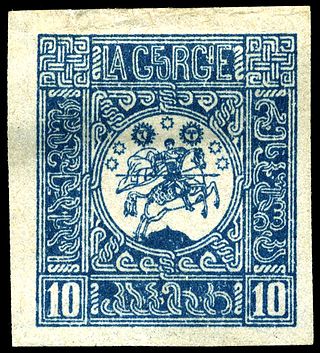
This is a survey of the postage stamps and postal history of Georgia.
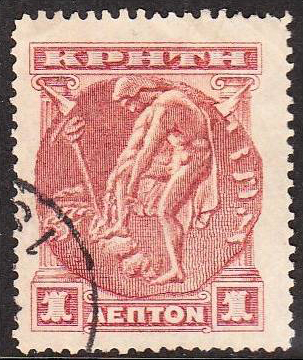
This is a survey of the postage stamps and postal history of Crete.

This is a survey of the postage stamps and postal history of Ukraine.

Raymond John Ceresa was an English chemist, stamp collector and philatelic expert on postage stamps of Russia and areas from the 1917–23 era. Ceresa wrote a five-volume monumental work on these issues.

The city of Batum in modern-day Georgia issued revenue stamps in 1918 while under British occupation. A set of 7 from 20k to 30R was originally issued, and this was later overprinted BRITISH OCCUPATION. The 20k was later also surcharged 20 руб., for 20 rubles.

Nyasaland, now known as Malawi, first issued revenue stamps as British Central Africa in 1891 and continued to do so until the late 1980s.



















